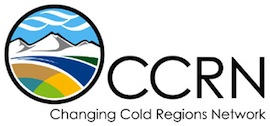
Dr. Bob Kochtubajda
Environment and Climate Change Canada
Research areas
My research contributions and collaborations focussed on improving understanding of processes and factors associated with recent extreme weather events (i.e. 2013 southern Alberta flood and the 2014 fire season in NWT), and on freezing precipitation in the CCRN domain. A variety of observational sources and model products were used in these studies including surface weather and upper-air network information, lightning network information, weather radar, operational Canadian numerical weather model information, fire information, and satellite and reanalysis data.
Detailed meteorological analyses were carried out on the June 2013 southern Alberta flood from several perspectives and at several scales, which illustrated the sequence of events that combined to create this extreme precipitation event. It was shown that severe convection and its associated lightning and rainfall played a significant role during the early stages of this flooding event.
The occurrence of freezing precipitation is an ever-increasing issue in Canada often leading to major disruptions to air and ground transportation, numerous injuries to Canadians, damage to electrical grids and the prevention of arctic caribou and other animals from accessing the plants they need for survival. A dataset of hourly observations from long-term manned weather stations across the CCRN domain was compiled and the spatial and temporal characteristics of freezing rain, freezing drizzle and ice pellets were updated. An examination of long-lived and widespread freezing rain events found that chinook-associated synoptic flow patterns can result in freezing rain. Furthermore, given the annual patterns of freezing rain a maximum of 5 regimes were proposed.
Fire activity is influenced by three factors: fuels, ignition sources, and weather conditions. These factors combined during the summer of 2014 in the Northwest Territories where the mostly lightning-caused wildfires burned a record 3.39 Mha, and smoke led to dramatic air quality and visibility reductions resulting in numerous health alerts, road closures, and increases in health clinic and emergency room visits for respiratory issues. Temporal and spatial patterns of lightning characteristics were noticeably different in 2014 from those occurring in previous years with, for example, far more nighttime positive flashes. Furthermore, our analysis showed higher fire ignition efficiency associated with negative flashes in the smoke-filled North Slave region. Analyses of upper level atmospheric circulations showed that the frequent occurrence of ridging patterns is characteristic of extreme fire years including 2014.
These studies have been communicated to various audiences at conferences and meetings, and in peer-reviewed journals. The collaborative approach used in carrying out these studies proved to be very efficient and successful which lead to new insights on atmospheric-related issues. Furthermore, stronger partnerships have been forged with ECCC’s operational meteorologists, provincial flood forecasters and fire researchers.
